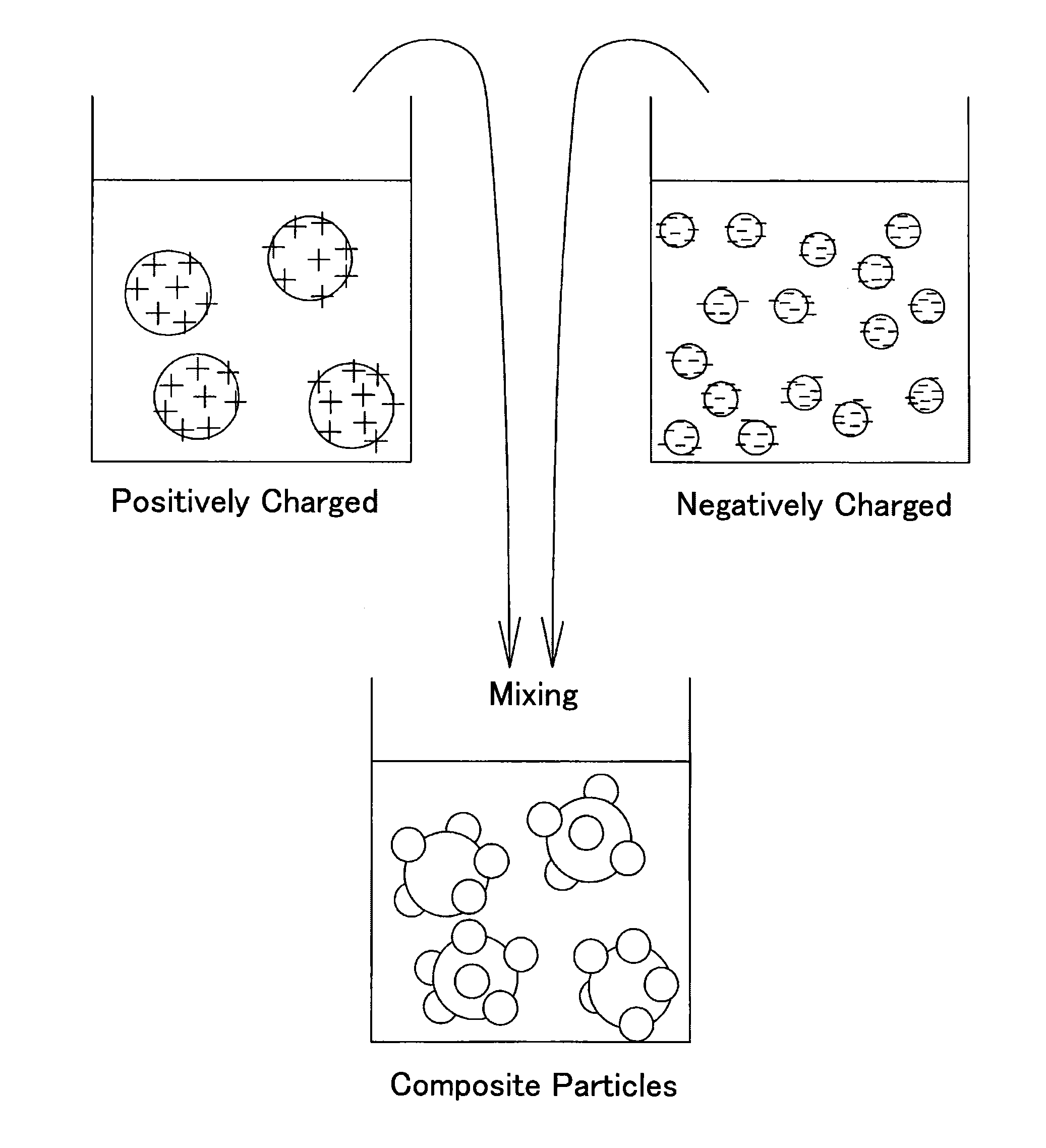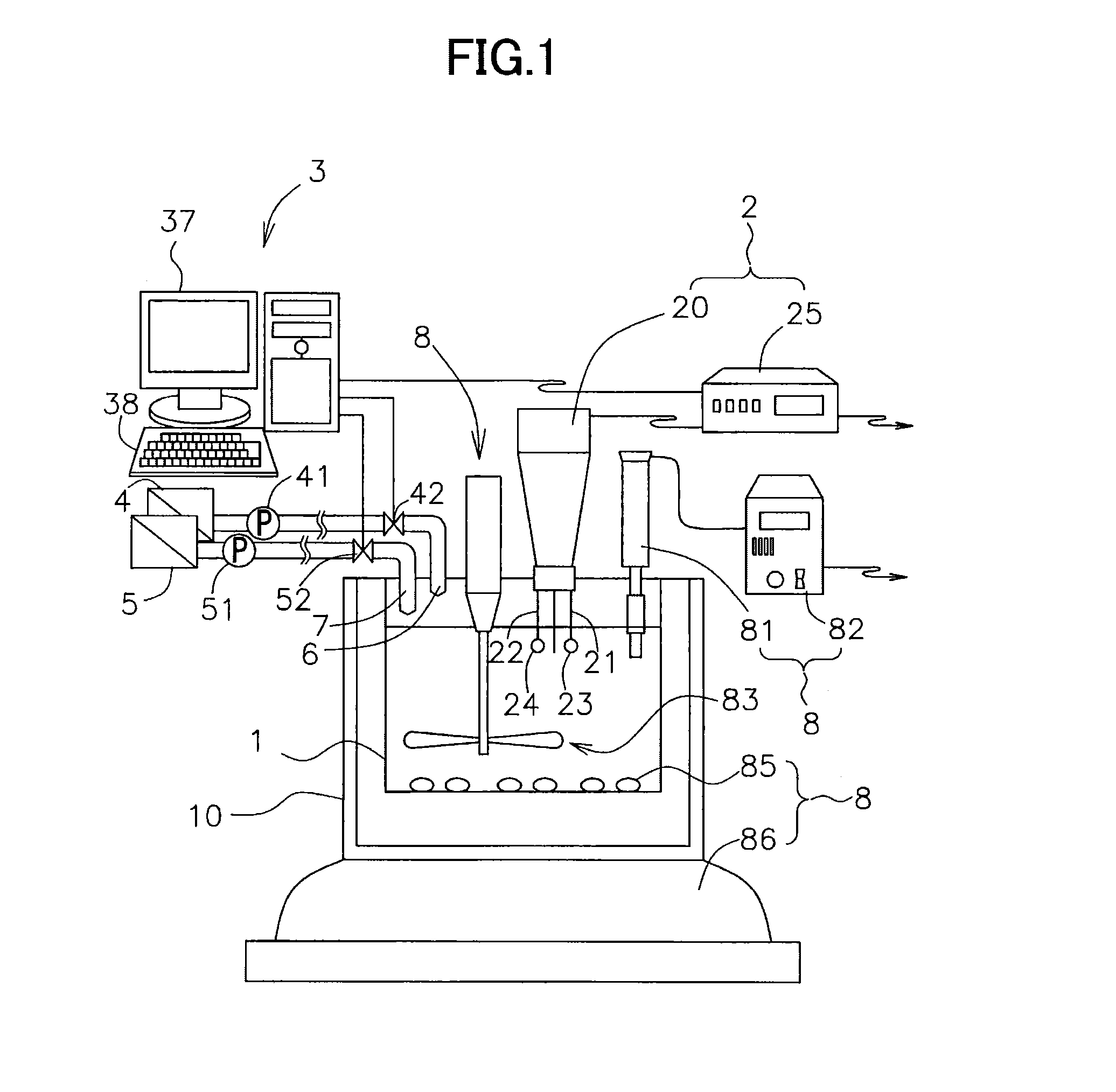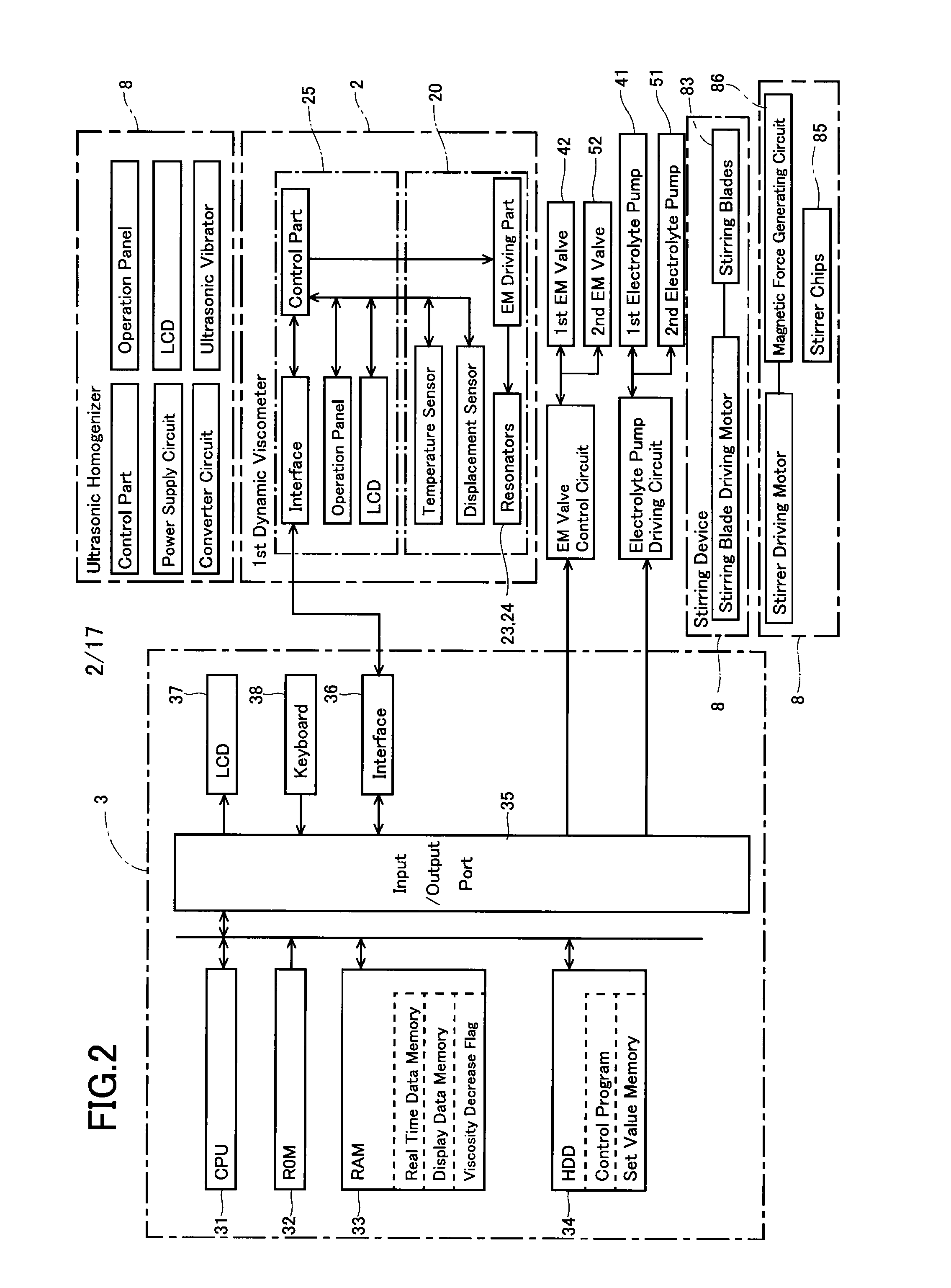Device and process for producing composite particles
a technology of composite particles and devices, applied in the direction of metal material coating processes, coatings, granulation in stationary drums/troughs, etc., can solve the problems of difficult mechanical mixing such as ball milling, and achieve the effects of improving work efficiency, simplifying production processes, and improving production efficiency
- Summary
- Abstract
- Description
- Claims
- Application Information
AI Technical Summary
Benefits of technology
Problems solved by technology
Method used
Image
Examples
experimental examples
[0130]Next, an experiment was conducted to study a relation between viscosity when an electric charge is controlled by the abovementioned process and zeta potential. In regard to a process of the experiment, viscosity and zeta potential were measured while gradually adding a polystyrene sulfonate (PSS) solution to liquid containing particles of alumina (α-Al2O3) (100 nm in diameter). Furthermore, viscosity and zeta potential were measured while gradually adding a poly(diallyl dimethyl ammonium chloride) (PDDA) solution to the liquid containing the thus produced polyanion-adsorbing particles.
[0131]Results of the experiment are shown in FIG. 14. As shown by graphs in this figure, when polyanions (PSS) are gradually added to the particles, timing when zeta potential changes from a positive to a negative and has a value close to a minimum for the first time coincides with timing when viscosity of liquid containing the particles has a minimum value. This means that the particles are suff...
PUM
| Property | Measurement | Unit |
|---|---|---|
| Dispersion potential | aaaaa | aaaaa |
| Viscosity | aaaaa | aaaaa |
| Surface charge | aaaaa | aaaaa |
Abstract
Description
Claims
Application Information
 Login to View More
Login to View More - R&D
- Intellectual Property
- Life Sciences
- Materials
- Tech Scout
- Unparalleled Data Quality
- Higher Quality Content
- 60% Fewer Hallucinations
Browse by: Latest US Patents, China's latest patents, Technical Efficacy Thesaurus, Application Domain, Technology Topic, Popular Technical Reports.
© 2025 PatSnap. All rights reserved.Legal|Privacy policy|Modern Slavery Act Transparency Statement|Sitemap|About US| Contact US: help@patsnap.com



